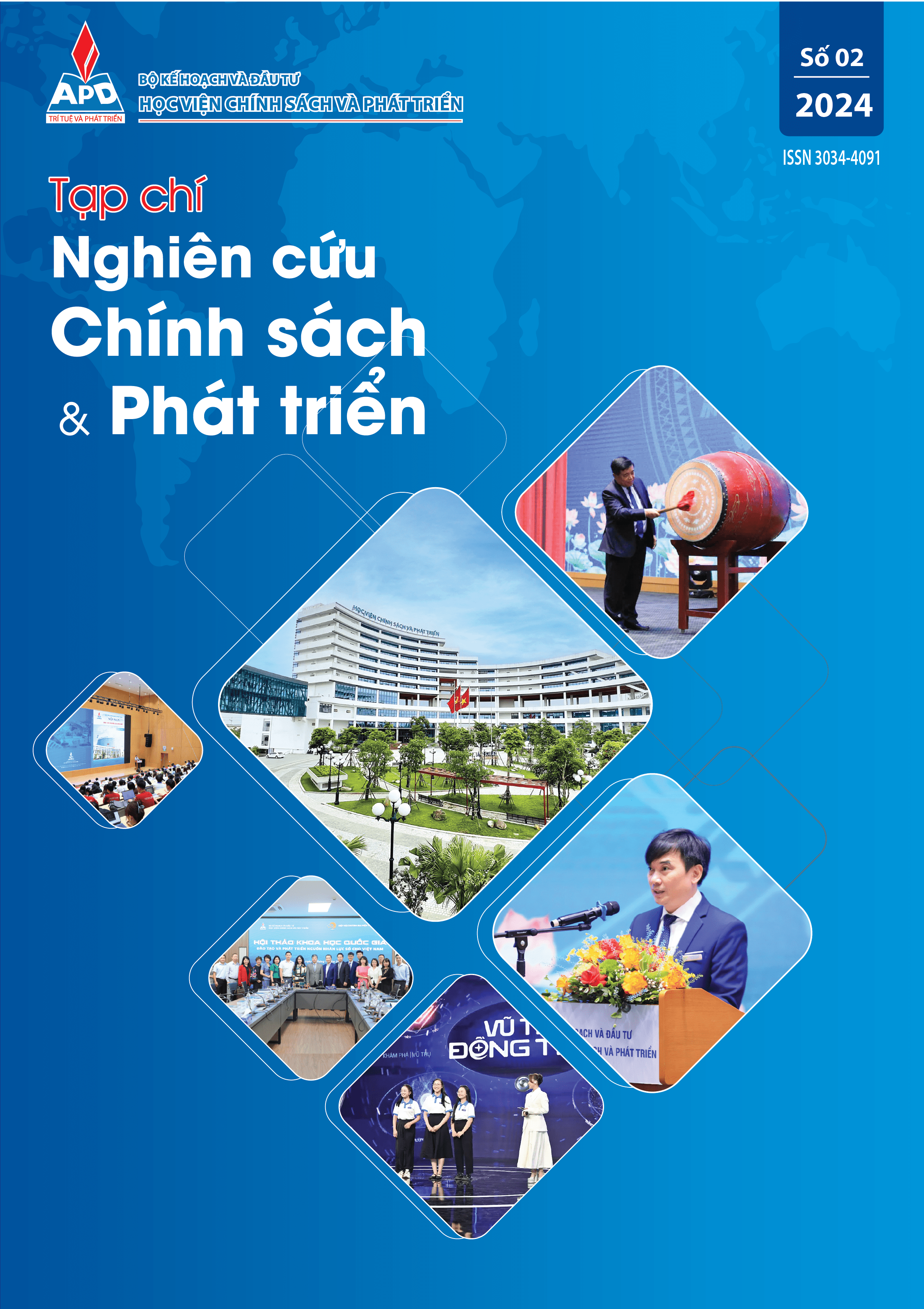Xác định mức độ ưu tiên của các yếu tố thúc đẩy đầu tư xanh của các doanh nghiệp xây dựng tại Hà Nội
Downloads
Published
How to Cite
Issue
Section
Keywords:
Green investment, promoting investment, construction enterprises, sustainable development, AHP analysisAbstract
Green investment is an inevitable trend of construction enterprises to minimize the impacts of climate change and environmental pollution today. The study applied the AHP analytical hierarchy method to determine the priority of factors promoting green investment of construction enterprises in Hanoi. The research results show that there are 4 main criteria: Enterprises, Government Society, Economic Development and 13 sub-criteria. In which, the Enterprises factor is the factor that has the strongest influence and promotes green investment in the construction industry. Next are the Government and Economic Development factors. The Social factor ranks last. With the set of criteria to assess the priority of factors promoting green investment in the construction industry, policy developers as well as enterprises in the construction industry can understand that raising awareness of enterprises or Government policies is the top priority issue for promoting green investment in the construction industry in Hanoi today.
References
1. Abdou, A.H.; Hassan, T.H.; Salem, A.E.; Elsaied, M.A.; Elsaed, A.A. (2022). Determinants and Consequences of Green Investment in the Saudi Arabian Hotel Industry. Sustainability , 14(24), 16905; https://doi.org/10.3390/su142416905.
2. Aliagha et al. (2013). Review of Green Building Demand Factors for Malaysia. Journal of Energy Technologies and Policy, 471-478.
3. Amir Rahmani et al. (2023). Determinants of households’ intention for investment in renewable energy projects. Renewable Energy, 823-837.
4. Bosch, S., and Pearce, A.R. (2003). Sustainability in public facili-ties: analysis of guidance documents. ASCE Journal of Performance of Constructed Facilities, 17(1), 9–18.
5. Chang, D. (1996). Applications of the Extent Analysis Method on Fuzzy AHP. European Journal of Operational Research, 95, 649-655; http://dx.doi.org/10.1016/0377- 2217(95)00300-2.
6. Chițimiea, A.; Minciu, M.; Manta, A.-M.; Ciocoiu, C.N.; Veith, C. (2021). The Drivers of Green Investment: A Bibliometric and Systematic Review. Sustainability, 13, 3507. https://doi.org/10.3390/su13063507.
7. Cidell and Cope. (2014). Factors explaining the adoption and impact of LEEDbased green building policies at the municipal level. Journal of Environmental Planning and Management, Vol. 57, Iss.12, 1763-1781.
8. Eyraud, L.; Clements, B.; Wane, A. (2013). Green investment: Trends and determinants. Energy Policy, 852-865.
9. GGGI. (2019). What is Green Entrepreneurship? Retrieved from https://gggi.org/: https://gggi.org/wpcontent/uploads/2019/04/GGGI-Guide-to-GreenEntrepreneurship-in-Kiribati-Chapter-2-What-isGreen-Entrepreneurship-1.pdf
10. H.D. Nguyen and L. Macchion (2022). Exploring critical risk factors for Green Building projects in developing countries: The case of Vietnam. Journal of Cleaner Production 381, https://doi.org/10.1016/j.jclepro.2022.135138.
11. IFC. (2017, 11 24). Công trình xanh - Giải pháp thích ứng với biến đổi khí hậu toàn cầu. Retrieved from https://tapchimoitruong.vn/: https://tapchimoitruong.vn/tang-truong-xanh- 83/C%C3%B4ng-tr%C3%ACnh-xanh--- Gi%E1%BA%A3i-ph%C3%A1pth%C3%ADch-%E1%BB%A9ngv%E1%BB%9Bi-bi%E1%BA%BFn- %C4%91%E1%BB%95i-kh%C3%ADh%E1%BA%ADu-to%C3%A0nc%E1%BA%A7u-19863
12. K. Sohag et al. (2023). Resources Policy 82, https://doi.org/10.1016/j.resourpol.2023.103499.
13. Kabir, Liudmila S. and Ivan D. Rakov (2023). Russian Companies’ Motivations for Making Green Investments. Journal of Risk andFinancial Management 16: 145, http://dx.doi.org/10.3390/jrfm16030145.
14. Khan et al. (2023). Investing in green intellectual capital to enhance green corporate image under the Influence of green innovation climate: A Case of ChineseEntrepreneurial SMEs . Journal of Cleaner Production , https://doi.org/10.1016/j.jclepro.2023.138177.
15. Knuutila M. and Vuorio A. (2023). Temporal-orientation in organizational decisionmaking: Factors affecting willingness to execute energy efficiency investments in business premises. Energy, https://doi.org/10.1016/j.energy.2023.127076.
16. Leonid Taraniuk, Renata Korsakiene, Karina Taraniuk. (2023). Management of green investment of countries in term of their technological development. Technology audit and production reserves, No. 3/4 (71) , 42-47.
17. Liu et al. (2022). Pathways to successful building green retrofit projects: Causality analysis of factors affecting decision making. Energy & Buildings, 1-12.
18. Markevych, K. (2022). Global Trends of Green Investment. In K. A. Kvach, Innovations for Achieving the Sustainable Development Goals: Science, Education and Economics (pp. 4- 43). Ljubljana School of Business.
19. Millet, I. (1998). Ethical decision making using the analytic hierarchy process. Journal of Business Ethics, 17(11), 1197-1204.
20. Nelms et al. (2005). Assessing the performance of sustainable technologies for building projects. Can. J. Civ. Eng. Vol. 32, 114- 128.
21. Saaty, R. W. (1987). The Analytic Hierarchy Process – What It Is and How It Is Used. Mathematical Modeling 9(3-5), 161-176.
22. Singh, Sanjay Kumar, Manlio Del Giudice, Roberto Chierici, and Domenico Graziano. (2020). Green innovation and environmental performance: The role of green transformational leadership and green human resource management. Technological Forecasting and Social Change 150: 119762.
23. T.T.T. Tran et al. (2020). The factors affecting green investment for sustainable development . Decision Science Letters , 365-386.
24. Zhang, Y.; Berhe, H.M. (2022). The Impact of Green Investment and Green Marketing on Business Performance: The Mediation Role of Corporate Social Responsibility in Ethiopia’s Chinese Textile Companies. Sustainability, 14(7) : 3883. https://doi.org/10.3390/su14073883.







